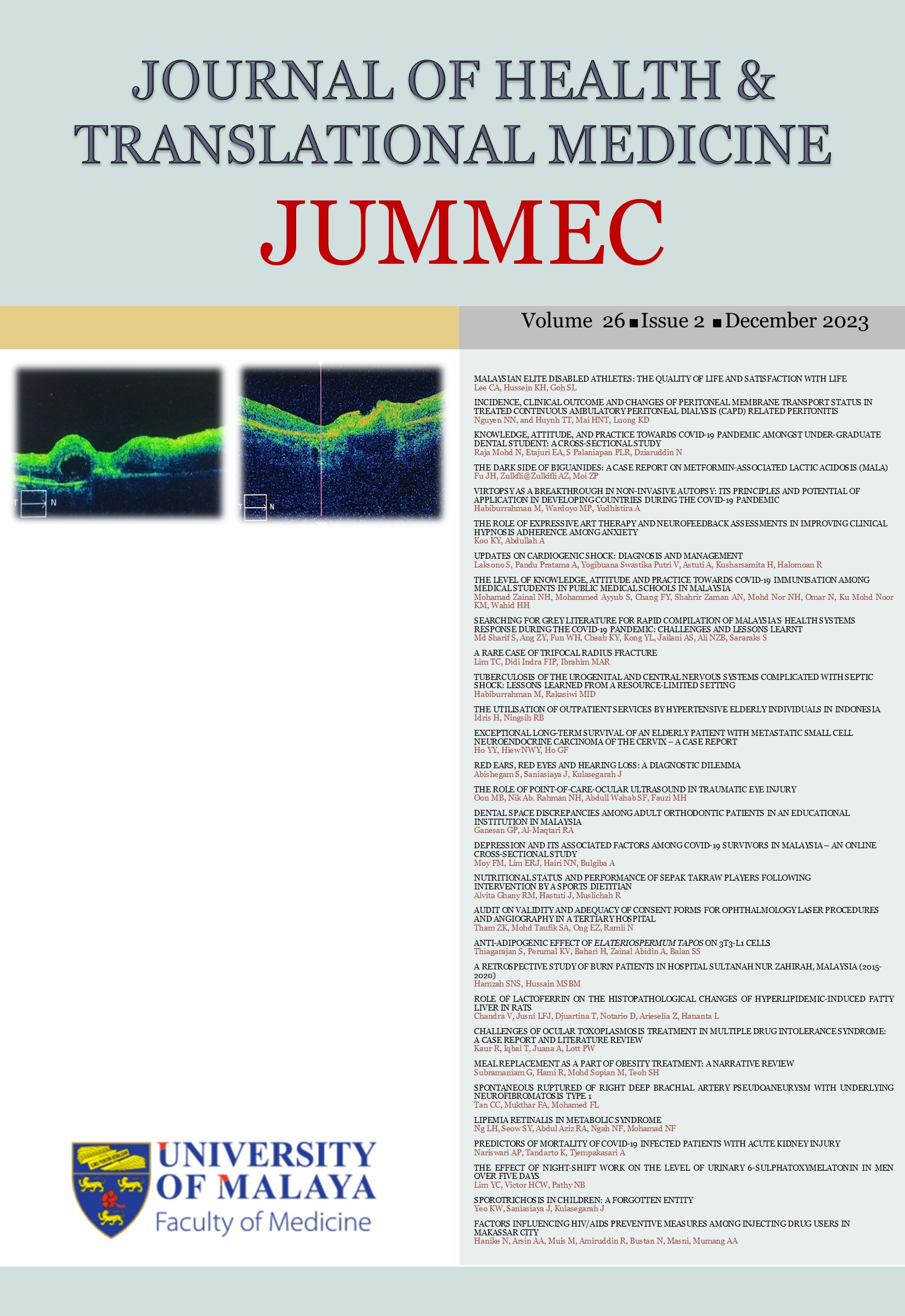INCIDENCE, CLINICAL OUTCOME AND CHANGES OF PERITONEAL MEMBRANE TRANSPORT STATUS IN TREATED CONTINUOUS AMBULATORY PERITONEAL DIALYSIS (CAPD) RELATED PERITONITIS
Received 2022-05-21; Accepted 2023-03-20; Published 2023-05-22
DOI:
https://doi.org/10.22452/jummec.vol26no2.2Keywords:
CAPD, CKD, peritoneal membrane, peritonitisAbstract
Peritoneal dialysis-related peritonitis remains the most common complication and a key barrier to peritoneal dialysis’ long-term success. The present study aimed to report on the incidence of peritonitis and clinical outcomes in CKD patients on CAPD at a hospital in Vietnam’s south and evaluate the peritoneal membrane transport status before and after peritonitis therapy. This study was a cross-sectional study involving 141 participants sampled from the warded adult patients at An Giang center general hospital, in Vietnam. Peritonitis rate was measured in terms of incidences per patient-year. Dialysis fluid was drawn under aseptic conditions and treated using a culture approach to identify bacteria. The response treatment time for each episode of peritonitis after receiving empirical antibiotic medication. We use Peritoneal Equilibration Test (PET) to determine the peritoneal transport status. Peritonitis was found in 29.8% of the cases. The number of episodes of peritonitis per patient-year was 0.035. Negative bacteria account for 81.0 percent of all cases tested. It took an average of 3 to 5 days for a clinical response. Before and after peritonitis, there was no statistically significant connection between transport status groups. The rate of peritonitis identified in this study was significantly lower than that recommended by the International Society for Peritoneal Dialysis (ISPD) recommendations. More research is needed to fully understand the variables that influence the clinical outcomes of peritonitis and the remaining function of the peritoneal membrane.
Downloads
Downloads
Published
Issue
Section
License
All authors agree that the article, if editorially accepted for publication, shall be licensed under the Creative Commons Attribution License 4.0 to allow others to freely access, copy and use research provided the author is correctly attributed, unless otherwise stated. All articles are available online without charge or other barriers to access. However, anyone wishing to reproduce large quantities of an article (250+) should inform the publisher. Any opinion expressed in the articles are those of the authors and do not reflect that of the University of Malaya, 50603 Kuala Lumpur, Malaysia.


